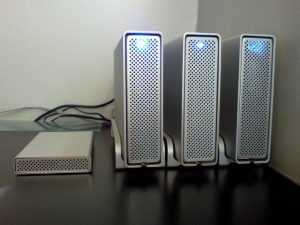 As we discussed in earlier posts, WordPress is one of the best ways for online entrepreneurs to quickly start a business online. It’s a powerful and flexible option and it’s great for running a variety of ventures. Entrepreneurship Life is powered by WordPress.
As we discussed in earlier posts, WordPress is one of the best ways for online entrepreneurs to quickly start a business online. It’s a powerful and flexible option and it’s great for running a variety of ventures. Entrepreneurship Life is powered by WordPress.
One of the best things about WordPress is the simplicity. Even someone with very limited computer or programming experience can quickly get a site up. It literally takes minutes to get a basic framework in place. Add in a free or premium theme with a few design tweaks and you are ready to go.
So it’s important for any online entrepreneur to learn the basics of WordPress design. But many of us are not tech experts…and we don’t always have IT departments. When things go wrong, we often have to fix it ourselves.
I recently learned this lesson the hard way, when one of my sites simply disappeared one day. BlueHost lost my blog. It might have been their error, or it might have been my mistake. Either way, it was gone.
I called them to see what happened, and of course they didn’t know. The most recent backup had been deleted from their server. Thank goodness I did have a backup from three weeks ago saved onto my hard drive. So, I was able to restore the site to that point. But, of course I lost all the work that I’d done on the blog since then.
So, I learned the hard way how important it is to backup your WordPress blog every single time you make changes. You think losing all your blog data won’t happen to you, until it does. Learn from my mistakes.
Here is a quick backup tutorial. This guide will show you how to backup your blog quickly and with minimal effort.
Backup Steps:
1) Download FTP add-on. First you will need to download a File Transfer Protocol (FTP) program. If you use Firefox, you can install a plug-in like FireFTP. It’s a secure way to transfer files. Set it up to download or upload files between your machine and the host server. This is better than having your backup files emailed to you unsecurely, or downloading unsecure files.
2) Install backup plugin. Next, install a security plugin like Better WP Security. You should be using a backup plugin already to protect your site from hack attacks. Check out last weeks post for a primer on basic site security.
3) Create fresh backup. Once you have the backup plugin installed, create a backup. You can set this up to be automatic, but you should also back up every time you update your site. With Better WP Security, the backup will be saved to your host’s server.
This is where I got into trouble. I thought that since the site was set to backup every day, I was covered. Not so…when my site was deleted the backup stored on their server was deleted as well. So it’s important to do a download a new backup every single time you make any changes to your WordPress blog. Otherwise, you run the risk of losing it all.
4) Compress wp-content. And now you will need to log in to your C-panel and go into the “File Manager” area. Find the file called wp-content. Then, create a compressed copy of that file. Once it’s done you should see a zipped file called wp-content. Close out of File Manager.
5) Download files via FTP. Now, go back into your Firefox browser. Open the FTP program. You can find it under Tools->Web Developer->FireFTP. If you haven’t created an account with your hosting company, do so now. This step can get a bit complicated…if you get stuck just call your hosting company and they can easily help you connect via FTP.
Create a folder for your backups, I like to keep all mine in one place. Use the FTP program to download these three files from your hosting company into your backup folder:
- database backup zip file
- wp-content zip file
- wp-config.php file
It the files are zipped beforehand, it shouldn’t take long to download all three. My internet isn’t that fast, but the whole thing takes less than one or two minutes to download.
6) Backup your backups. So now you should have all three files downloaded onto your hard drive. The final step is to back those files up. Store the files on an external hard drive. They are cheap and give you more storage than you will probably ever need. Ideally you would want to keep one at home and then store a second hard drive in another location like a safe deposit box.
And that’s it! Now, all your blog or website files are backed up securely. If you lose your blog then you have a fresh backup, and it’s relatively simple to restore a site if you have these three files saved.
It seems complicated but it’s really not. I’ll admit, it’s a bit of a hassle to backup your blog every single time you update it….but think about the alternative. How will you feel if you have to redo weeks of work because you didn’t back things up properly? Don’t lose hours of work and potentially thousands of dollars…back it up!

